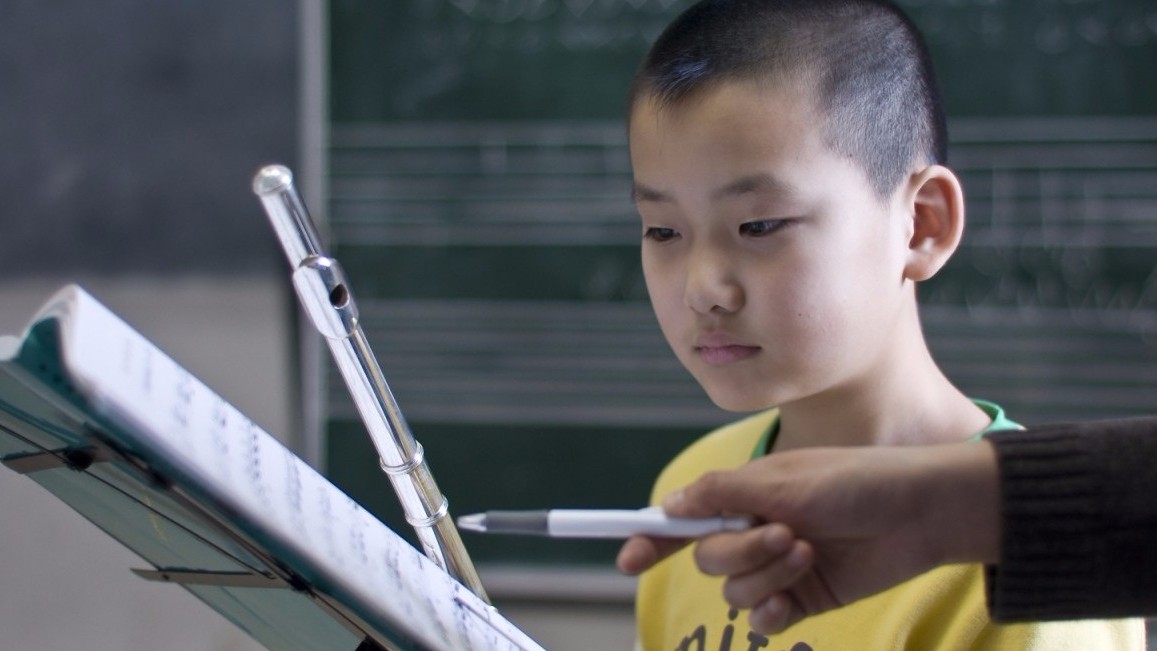
Another Way of Approaching Positivity

Positivity is a funny one – it sometimes gets a bad rap because it is so often not the real deal. Positivity is more than random “Well done! Good try!”s. I want to introduce you to another way of looking at positivity…
When I was learning to fly a plane, my instructor would occasionally say “you need to be more positive”. Now I took that to heart, thinking that he meant I wasn’t being enthusiastic enough (and I thought I was!). Turns out, in flying, “positive” has a different meaning. It means solid, strong, deliberate. It’s referring to how you manipulate the controls of the plane, and equally how you’re thinking about them – there’s no room for “maybe I’ll just lightly pull the nose up a little bit and see if I manage to avoid the ground”! More on how this relates to flute teaching in a moment.
Back to the traditional sense of “being positive”. The number one rule is that it has to be genuine to be effective. Everyone, no matter how young they are, can tell whether a positive comment is genuine. It has to be accurate and absolutely must be believed by the teacher themselves for it to have a good effect on the flute student. In other words, positivity can’t be faked.
So how do you actually know if you’re being genuine or not? In a nutshell, if you believe it yourself, it will be genuine, and helpful. For example, if you are working on improving a student’s tone, and you hear no improvement over a 5 min exercise, it’s unhelpful to say “you’re getting better” when they’re not. (Equally, you don’t need to tell them they’re completely hopeless either!) Both these comments would be unconstructive.
The approach to take is to FIND an honest observation of what has just happened. Comment on their good concentration. Comment on their posture, despite the exercise being tiring. Comment on their stamina, compared to where they were 6 months ago for example.
YOUR next step, as a skilled teacher, is to work out why there has been no improvement in their tone while specifically working on it and break it down into an easier exercise for the student. For example, work on one specific task like having control over making their embouchure hole smaller. Or getting them to tune in their ears to actually hearing the tone that they are producing. (Have you noticed how many students aren’t really aware of the sound they’re making?)
THEN, you base an exercise on this. For example, making the embouchure hole smaller, and can they hear the change in sound? If they can’t do it at all, take them to a mirror, involve another sense and get them to SEE what the change you’re looking for looks like. And they WILL be able to change something about their playing and hear the difference.
Approaching a problem in this way, means you are creating an environment where they cannot fail.
This may sound strange, but your job as their teacher is to manufacture their success.
“”Manufacture their success” you say?! Isn’t that deceiving?”
If you create an environment where they make a small (or large) step forward, and they know it, not only are they progressing on the flute, but their mind set dramatically shifts. They realize that they can do this! And everybody loves to succeed. Everybody.
Ensuring that they succeed is like flicking a switch in them. Once it’s on, the magic starts to happen. And this of course is nothing even close to deception, because it’s real.
Now you may ask, what if I can’t find anything to be positive about in the student’s playing or progress? To that I say: not everything that the student does will be a good step forward, but there will always be something that that they are doing that is better than the rest of what they’re doing – you just have to find it. And if you can’t find it, create it by using the technique above.
Which brings me back to flying a plane. “Positive” can mean deliberate, confident steps in the right direction. And you can probably see now how a genuinely positive approach to teaching actually incorporates this new meaning.
If this whole approach is new to you (or doesn’t come as naturally as you would like), the trick is to treat it like a challenge (if you like challenges) or a game (if you’re more into games!). Can you find an improvement? How can you help them progress in one little detail?
All little advancements add up into something amazing – that is a fact. Small, continuous, positive steps in the right direction will get them to places you never thought they’d be.
The responsibility is now on your shoulders. Enjoy!



